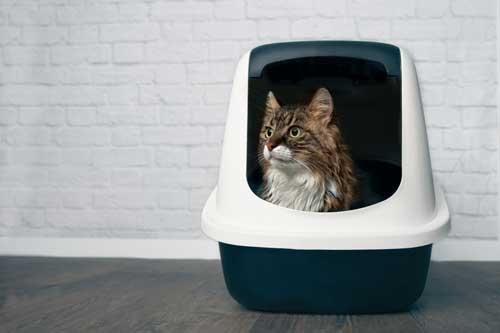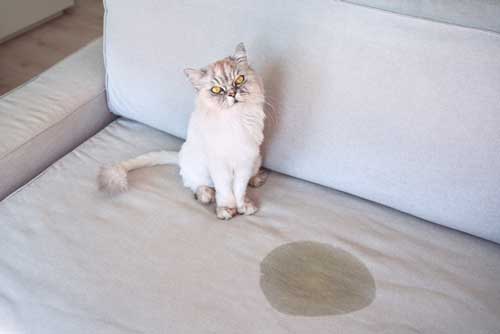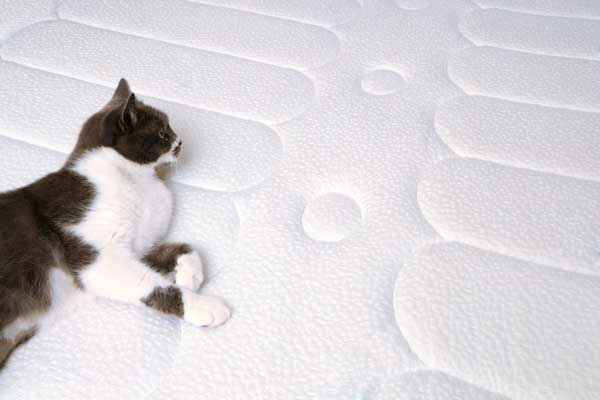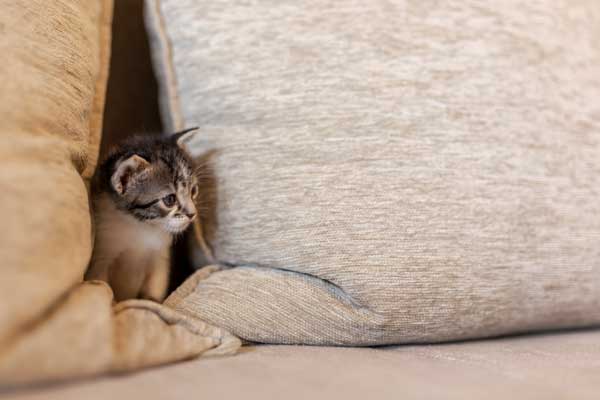It’s important that cats have a comfortable, safe and inviting place to go to the bathroom. Just like we do. However, if you’re fed up with that noxious ammonia scent and are looking for hygienic ways to get rid of it, read our top six tips.
1. Remove cat mess straight away
The easiest and most obvious way to get rid of that cat litter smell is by removing any poo or pee as soon as possible. Once you hear that instantly recognisable sound of your feline companion scraping through the litter, get ready to scoop away any mess. Cleaning up after them quickly, once or twice a day, means the different elements in the faeces or urine don’t have a chance to start breaking down. That means there’s less chance of the scent developing and sticking around.
2. Use an enzymatic cleaner
Once you’ve tidied up after your moggy, you can use an enzymatic cleaner. Bio one™ is a natural, non-toxic and pet-friendly product so it’s completely safe to use with your furry friends. The cleaner has multiple uses – try it as a pet odour remover to neutralise and kill any whiff of cat litter or to thoroughly disinfect the litter tray once you empty it, before you put new, fresh litter in.
How to use Bio one™ to get rid of cat litter smell:
- Spray the affected area thoroughly – making sure you coat all of the litter underneath the urine. It doesn’t matter if you spray more than the affected area.
- Spray the contaminated area until the whole surface is very damp and Bio one™ is fully soaked in.
- Leave the litter for 5-10 minutes.
- Spray again and allow to dry if required.
How to use Bio one™ to clean a litter tray:
- Remove any cat mess and all the old litter from the box.
- Simply rinse the tray clean of any debris or give it a quick wash with soap and warm water.
- Spritz your Bio one™ blend all over.
- Leave the tray for five minutes so the product can remove the bad bacteria.
- Once it looks and smells clean, wipe away any remaining residue.
- Repeat this every time you replace the cat litter to keep the tray clean, safe and odour-free.
3. Refresh the litter box
Your cat’s litter box might look clean and tidy when you keep on top of removing the mess, but it still needs a regular refresh. Depending on how often your cat uses the tray, changing the litter once or twice a week is probably best. For example, if your cat occasionally goes to the toilet outside, fortnightly should be enough. On the other hand, if they are an indoor cat that needs to do their business more frequently, go for weekly changes.
How to refresh a cat’s litter tray:
Remove all the old litter without spreading any mess or bacteria and replace with 3-4cm of clean litter. Try not to overfill the box as that can encourage your cat to dig and bury which means litter can end up all over the floor, spreading more germs and smells.
4. Pick the right litter
There are lots of different types of cat litter to choose from: clumping, non-clumping, scented, non-scented, low-dust versions, litter made from clay, sand, paper, wood, Fuller’s earth, corn and even wheat. Clumping litter is designed to stick to feline faeces, making it easier to remove. Removing all mess in one go should also stop unpleasant odours from developing. A low-dust litter is less likely to spread into the air and is a better option if you’re worried about lingering smells or suffer from allergies.
5. Ventilate the room
It’s tempting to tuck our pets litter tray somewhere small and hidden. But, it’s in these places that smells can really build up and worsen. If the litter box is in a room with windows, open them whenever you can (unless you have an indoor cat) to help the smell leave the room. Keeping the door open will also dissipate the scent, but it may spread elsewhere around the house. If that’s a concern, try opening it when you’re not at home but closing it when you are, so there’s at least a bit more opportunity for the air to circulate.
6. Clean the surrounding areas
Cleaning habitually is a great – and simple – way to keep your house smelling good. This is especially important directly around a litter box or within the same room. Our pets might do their best to be tidy, but they’re bound to spread mess on the floor or walls close by. Again, using an enzymatic cleaner like Bio one™ Pet Odour Remover is the ideal way to break down stubborn bacteria and aromas, leaving your home hygienic and sparkling.
What are enzymes?
Don’t be fooled to think that because enzymes are natural they are less effective than chemical cleaners. Enzymes are nature’s very own powerful cleaning tools. Making them the go to choice for pet owners who do not want to spray harmful chemicals around their pets and their home.
Simply put, enzymes are all around us performing millions of important tasks in our bodies and in nature every single day. They are a type of protein that act like a biological catalyst to speed up the break down of organic compounds.
Similarly to how saliva, (which contains enzymes), initiates the digestion process by breaking down food in our mouths, cleaning enzymes use the same ‘enzymatic digestion’ to effectively break down and eradicate the organic proteins present in urine, faeces, vomit, drool, dirt, food, and more.
This process not only makes cleaning easier but also prevents the growth of bad bacteria – the root cause of those unpleasant odours – in the air, on surfaces, and within the fibres of your soft furnishings.
Try out Bio one™ today, vomit and the other nasties is what nature created enzymes for.

Live Love Clean
-
Sale!
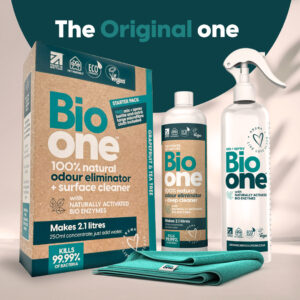
Bio One Odour Remover and Surface Cleaner Starter Pack – 250ml Concentrate
Original price was: $25.95.$18.95Current price is: $18.95. — or subscribe and save up to 10% Add to basket -
Sale!
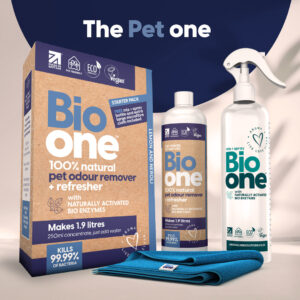
Bio One Pet Odour Remover Starter Pack- 250ml Concentrate
Original price was: $25.95.$18.95Current price is: $18.95. — or subscribe and save up to 10% Add to basket -
Sale!

Bio One Baby Odour Remover Starter Pack – 250ml Concentrate
Original price was: $25.95.$18.95Current price is: $18.95. — or subscribe and save up to 10% Add to basket -
Sale!
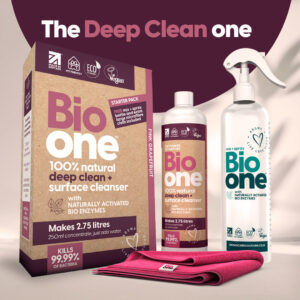
Bio One Deep Clean & Surface Cleanser Starter Pack- 250 ml Concentrate
Original price was: $25.95.$18.95Current price is: $18.95. — or Original price was: $18.95.$17.06Current price is: $17.06. / month Add to basket
-
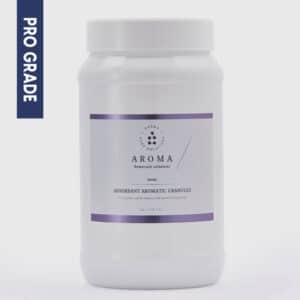
Absorbant Aromatic Granules – 1kg
$16.99 Add to basket -
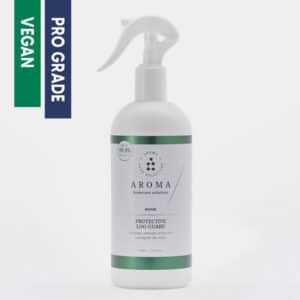
Eco Friendly Toilet Cleaner
$9.49 Add to basket -
Sale!
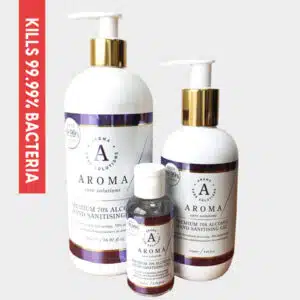
Premium 70% Alcohol Hand Sanitising Gel
$1.66 – $6.66 Select options This product has multiple variants. The options may be chosen on the product page -
Sale!
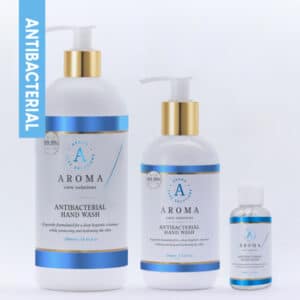
Luxury antibacterial Hand Wash with added moisturisers
$2.15 – $5.83 Select options This product has multiple variants. The options may be chosen on the product page

